Bingyi Cao
Global-to-Local or Local-to-Global? Enhancing Image Retrieval with Efficient Local Search and Effective Global Re-ranking
Sep 04, 2025Abstract:The dominant paradigm in image retrieval systems today is to search large databases using global image features, and re-rank those initial results with local image feature matching techniques. This design, dubbed global-to-local, stems from the computational cost of local matching approaches, which can only be afforded for a small number of retrieved images. However, emerging efficient local feature search approaches have opened up new possibilities, in particular enabling detailed retrieval at large scale, to find partial matches which are often missed by global feature search. In parallel, global feature-based re-ranking has shown promising results with high computational efficiency. In this work, we leverage these building blocks to introduce a local-to-global retrieval paradigm, where efficient local feature search meets effective global feature re-ranking. Critically, we propose a re-ranking method where global features are computed on-the-fly, based on the local feature retrieval similarities. Such re-ranking-only global features leverage multidimensional scaling techniques to create embeddings which respect the local similarities obtained during search, enabling a significant re-ranking boost. Experimentally, we demonstrate solid retrieval performance, setting new state-of-the-art results on the Revisited Oxford and Paris datasets.
Learning Visual Composition through Improved Semantic Guidance
Dec 19, 2024



Abstract:Visual imagery does not consist of solitary objects, but instead reflects the composition of a multitude of fluid concepts. While there have been great advances in visual representation learning, such advances have focused on building better representations for a small number of discrete objects bereft of an understanding of how these objects are interacting. One can observe this limitation in representations learned through captions or contrastive learning -- where the learned model treats an image essentially as a bag of words. Several works have attempted to address this limitation through the development of bespoke learned architectures to directly address the shortcomings in compositional learning. In this work, we focus on simple, and scalable approaches. In particular, we demonstrate that by substantially improving weakly labeled data, i.e. captions, we can vastly improve the performance of standard contrastive learning approaches. Previous CLIP models achieved near chance rate on challenging tasks probing compositional learning. However, our simple approach boosts performance of CLIP substantially and surpasses all bespoke architectures. Furthermore, we showcase our results on a relatively new captioning benchmark derived from DOCCI. We demonstrate through a series of ablations that a standard CLIP model trained with enhanced data may demonstrate impressive performance on image retrieval tasks.
TIPS: Text-Image Pretraining with Spatial Awareness
Oct 21, 2024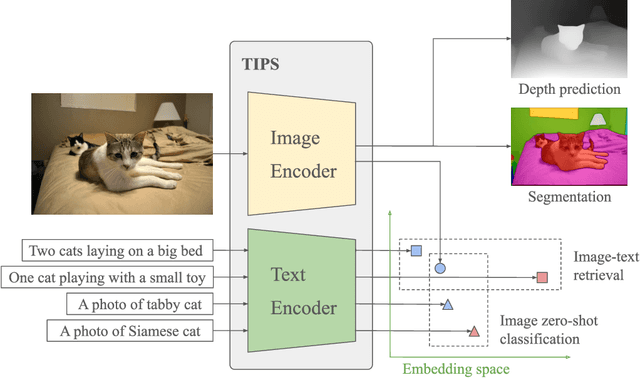
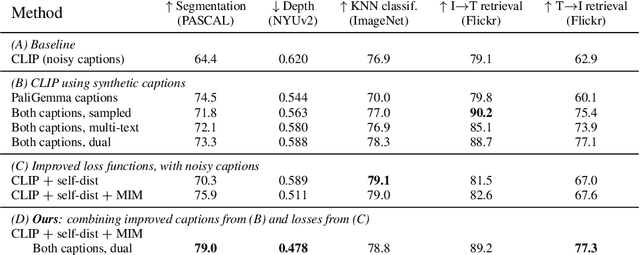
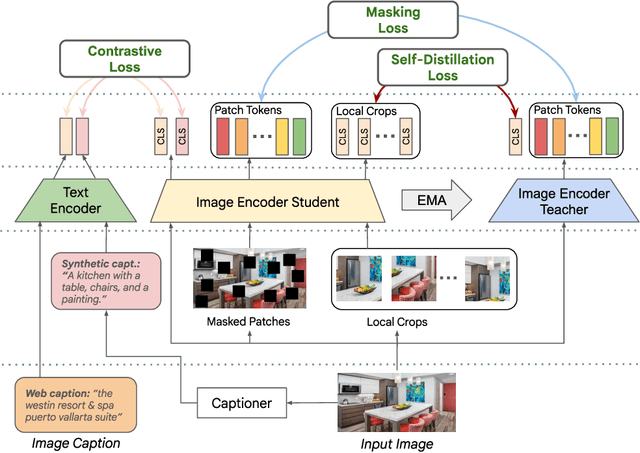

Abstract:While image-text representation learning has become very popular in recent years, existing models tend to lack spatial awareness and have limited direct applicability for dense understanding tasks. For this reason, self-supervised image-only pretraining is still the go-to method for many dense vision applications (e.g. depth estimation, semantic segmentation), despite the lack of explicit supervisory signals. In this paper, we close this gap between image-text and self-supervised learning, by proposing a novel general-purpose image-text model, which can be effectively used off-the-shelf for dense and global vision tasks. Our method, which we refer to as Text-Image Pretraining with Spatial awareness (TIPS), leverages two simple and effective insights. First, on textual supervision: we reveal that replacing noisy web image captions by synthetically generated textual descriptions boosts dense understanding performance significantly, due to a much richer signal for learning spatially aware representations. We propose an adapted training method that combines noisy and synthetic captions, resulting in improvements across both dense and global understanding tasks. Second, on the learning technique: we propose to combine contrastive image-text learning with self-supervised masked image modeling, to encourage spatial coherence, unlocking substantial enhancements for downstream applications. Building on these two ideas, we scale our model using the transformer architecture, trained on a curated set of public images. Our experiments are conducted on 8 tasks involving 16 datasets in total, demonstrating strong off-the-shelf performance on both dense and global understanding, for several image-only and image-text tasks.
OmniGlue: Generalizable Feature Matching with Foundation Model Guidance
May 21, 2024Abstract:The image matching field has been witnessing a continuous emergence of novel learnable feature matching techniques, with ever-improving performance on conventional benchmarks. However, our investigation shows that despite these gains, their potential for real-world applications is restricted by their limited generalization capabilities to novel image domains. In this paper, we introduce OmniGlue, the first learnable image matcher that is designed with generalization as a core principle. OmniGlue leverages broad knowledge from a vision foundation model to guide the feature matching process, boosting generalization to domains not seen at training time. Additionally, we propose a novel keypoint position-guided attention mechanism which disentangles spatial and appearance information, leading to enhanced matching descriptors. We perform comprehensive experiments on a suite of $7$ datasets with varied image domains, including scene-level, object-centric and aerial images. OmniGlue's novel components lead to relative gains on unseen domains of $20.9\%$ with respect to a directly comparable reference model, while also outperforming the recent LightGlue method by $9.5\%$ relatively.Code and model can be found at https://hwjiang1510.github.io/OmniGlue
Towards Universal Image Embeddings: A Large-Scale Dataset and Challenge for Generic Image Representations
Sep 04, 2023Abstract:Fine-grained and instance-level recognition methods are commonly trained and evaluated on specific domains, in a model per domain scenario. Such an approach, however, is impractical in real large-scale applications. In this work, we address the problem of universal image embedding, where a single universal model is trained and used in multiple domains. First, we leverage existing domain-specific datasets to carefully construct a new large-scale public benchmark for the evaluation of universal image embeddings, with 241k query images, 1.4M index images and 2.8M training images across 8 different domains and 349k classes. We define suitable metrics, training and evaluation protocols to foster future research in this area. Second, we provide a comprehensive experimental evaluation on the new dataset, demonstrating that existing approaches and simplistic extensions lead to worse performance than an assembly of models trained for each domain separately. Finally, we conducted a public research competition on this topic, leveraging industrial datasets, which attracted the participation of more than 1k teams worldwide. This exercise generated many interesting research ideas and findings which we present in detail. Project webpage: https://cmp.felk.cvut.cz/univ_emb/
Global Features are All You Need for Image Retrieval and Reranking
Aug 19, 2023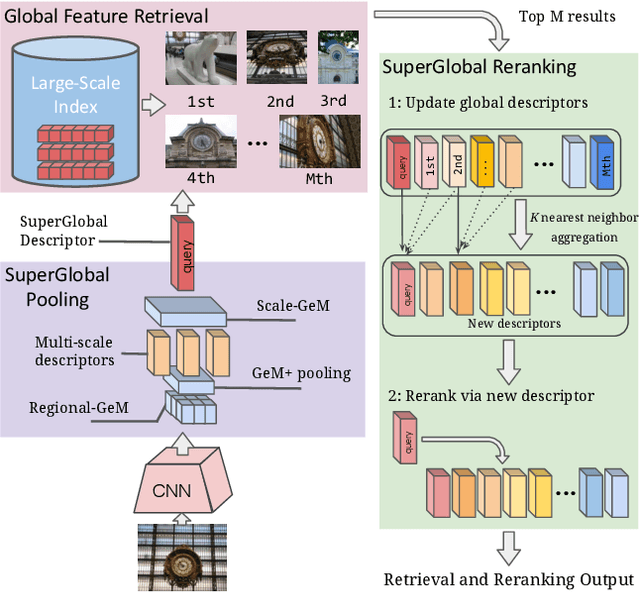
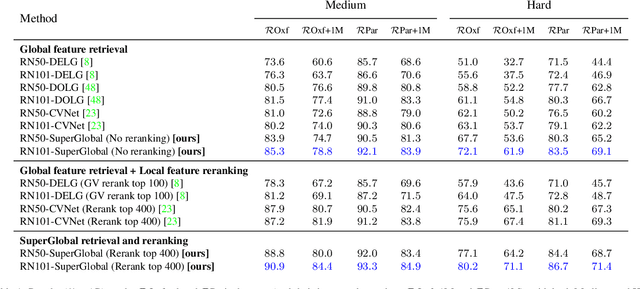
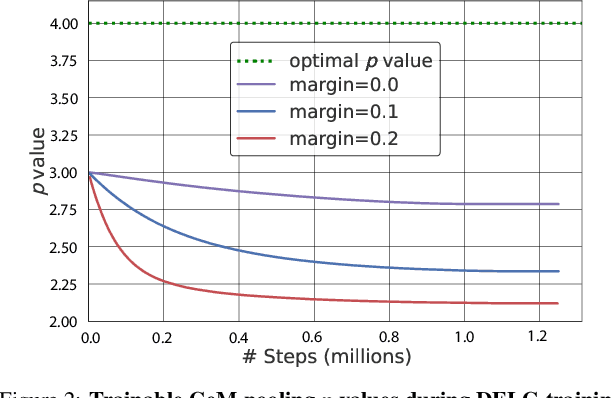

Abstract:Image retrieval systems conventionally use a two-stage paradigm, leveraging global features for initial retrieval and local features for reranking. However, the scalability of this method is often limited due to the significant storage and computation cost incurred by local feature matching in the reranking stage. In this paper, we present SuperGlobal, a novel approach that exclusively employs global features for both stages, improving efficiency without sacrificing accuracy. SuperGlobal introduces key enhancements to the retrieval system, specifically focusing on the global feature extraction and reranking processes. For extraction, we identify sub-optimal performance when the widely-used ArcFace loss and Generalized Mean (GeM) pooling methods are combined and propose several new modules to improve GeM pooling. In the reranking stage, we introduce a novel method to update the global features of the query and top-ranked images by only considering feature refinement with a small set of images, thus being very compute and memory efficient. Our experiments demonstrate substantial improvements compared to the state of the art in standard benchmarks. Notably, on the Revisited Oxford+1M Hard dataset, our single-stage results improve by 7.1%, while our two-stage gain reaches 3.7% with a strong 64,865x speedup. Our two-stage system surpasses the current single-stage state-of-the-art by 16.3%, offering a scalable, accurate alternative for high-performing image retrieval systems with minimal time overhead. Code: https://github.com/ShihaoShao-GH/SuperGlobal.
Improving Fairness in Large-Scale Object Recognition by CrowdSourced Demographic Information
Jun 02, 2022

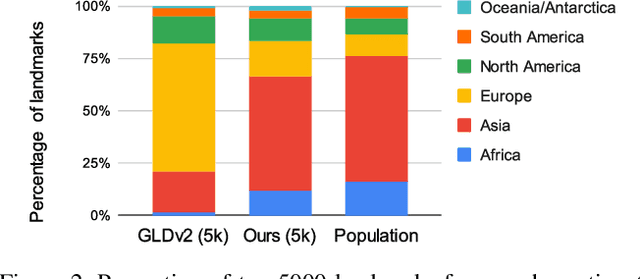
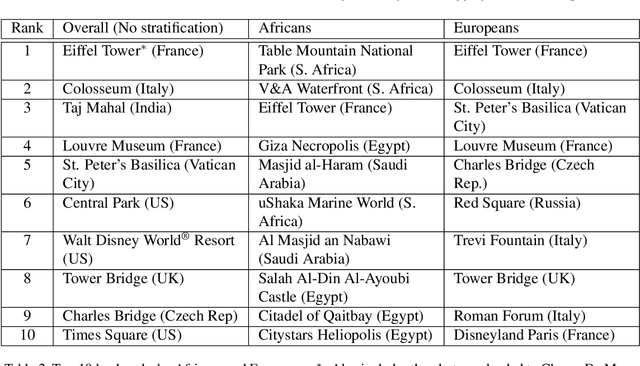
Abstract:There has been increasing awareness of ethical issues in machine learning, and fairness has become an important research topic. Most fairness efforts in computer vision have been focused on human sensing applications and preventing discrimination by people's physical attributes such as race, skin color or age by increasing visual representation for particular demographic groups. We argue that ML fairness efforts should extend to object recognition as well. Buildings, artwork, food and clothing are examples of the objects that define human culture. Representing these objects fairly in machine learning datasets will lead to models that are less biased towards a particular culture and more inclusive of different traditions and values. There exist many research datasets for object recognition, but they have not carefully considered which classes should be included, or how much training data should be collected per class. To address this, we propose a simple and general approach, based on crowdsourcing the demographic composition of the contributors: we define fair relevance scores, estimate them, and assign them to each class. We showcase its application to the landmark recognition domain, presenting a detailed analysis and the final fairer landmark rankings. We present analysis which leads to a much fairer coverage of the world compared to existing datasets. The evaluation dataset was used for the 2021 Google Landmark Challenges, which was the first of a kind with an emphasis on fairness in generic object recognition.
Towards A Fairer Landmark Recognition Dataset
Aug 19, 2021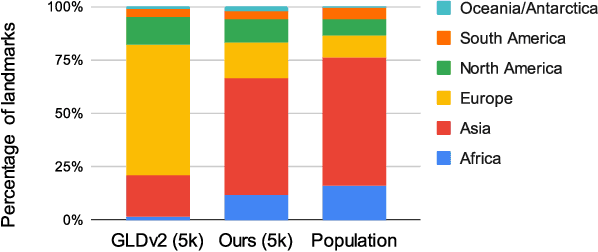
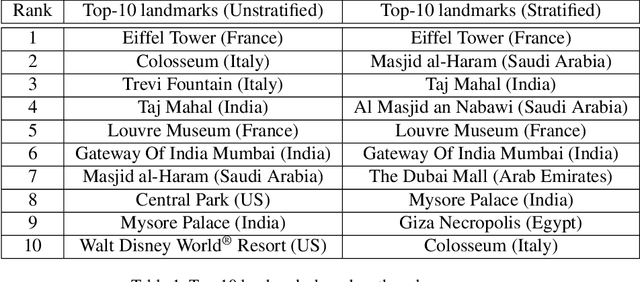
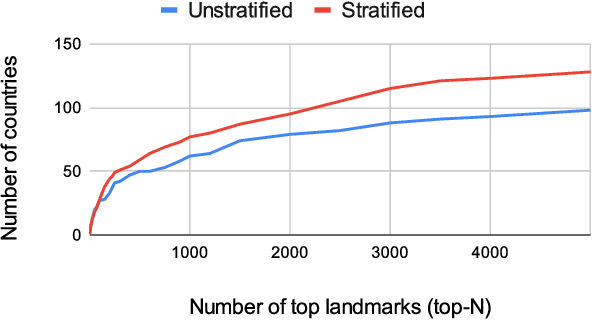

Abstract:We introduce a new landmark recognition dataset, which is created with a focus on fair worldwide representation. While previous work proposes to collect as many images as possible from web repositories, we instead argue that such approaches can lead to biased data. To create a more comprehensive and equitable dataset, we start by defining the fair relevance of a landmark to the world population. These relevances are estimated by combining anonymized Google Maps user contribution statistics with the contributors' demographic information. We present a stratification approach and analysis which leads to a much fairer coverage of the world, compared to existing datasets. The resulting datasets are used to evaluate computer vision models as part of the the Google Landmark Recognition and RetrievalChallenges 2021.
Google Landmarks Dataset v2 -- A Large-Scale Benchmark for Instance-Level Recognition and Retrieval
Apr 03, 2020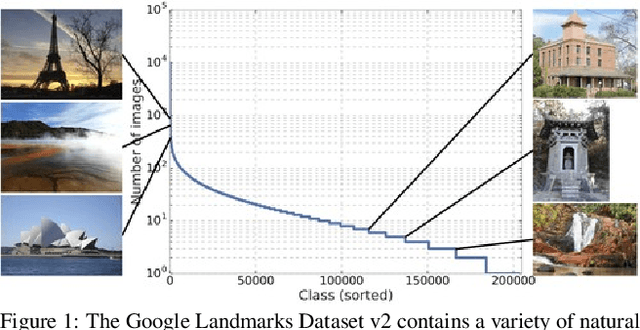
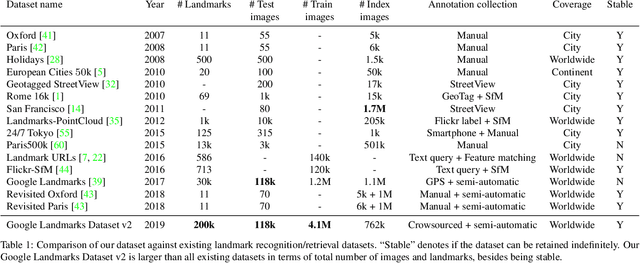
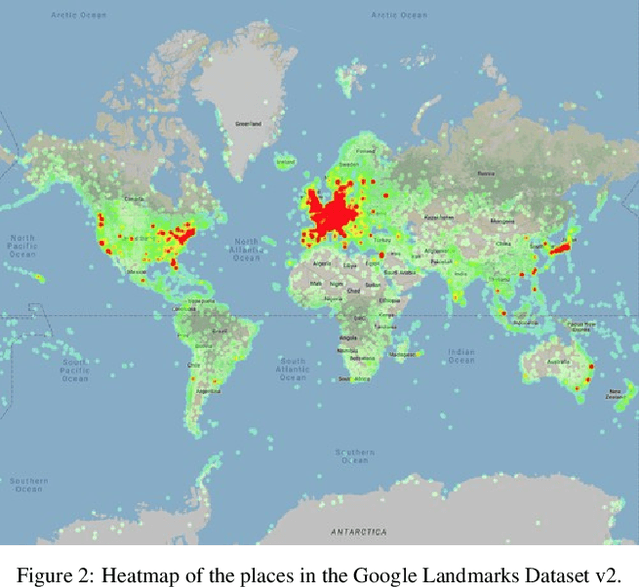
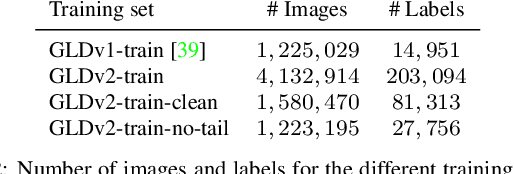
Abstract:While image retrieval and instance recognition techniques are progressing rapidly, there is a need for challenging datasets to accurately measure their performance -- while posing novel challenges that are relevant for practical applications. We introduce the Google Landmarks Dataset v2 (GLDv2), a new benchmark for large-scale, fine-grained instance recognition and image retrieval in the domain of human-made and natural landmarks. GLDv2 is the largest such dataset to date by a large margin, including over 5M images and 200k distinct instance labels. Its test set consists of 118k images with ground truth annotations for both the retrieval and recognition tasks. The ground truth construction involved over 800 hours of human annotator work. Our new dataset has several challenging properties inspired by real world applications that previous datasets did not consider: An extremely long-tailed class distribution, a large fraction of out-of-domain test photos and large intra-class variability. The dataset is sourced from Wikimedia Commons, the world's largest crowdsourced collection of landmark photos. We provide baseline results for both recognition and retrieval tasks based on state-of-the-art methods as well as competitive results from a public challenge. We further demonstrate the suitability of the dataset for transfer learning by showing that image embeddings trained on it achieve competitive retrieval performance on independent datasets. The dataset images, ground-truth and metric scoring code are available at https://github.com/cvdfoundation/google-landmark.
Unifying Deep Local and Global Features for Efficient Image Search
Jan 14, 2020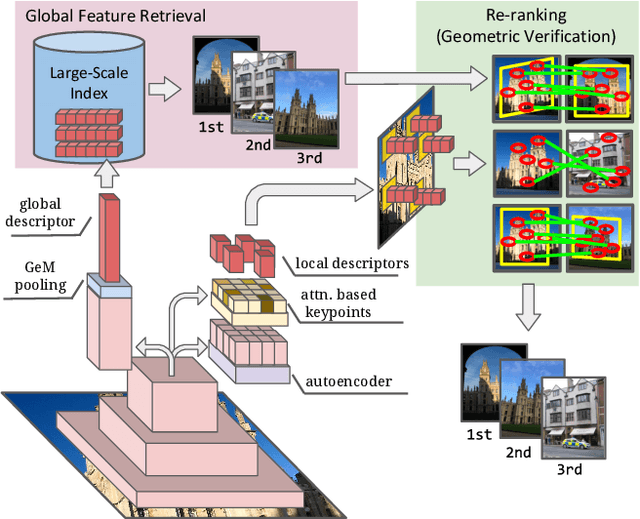
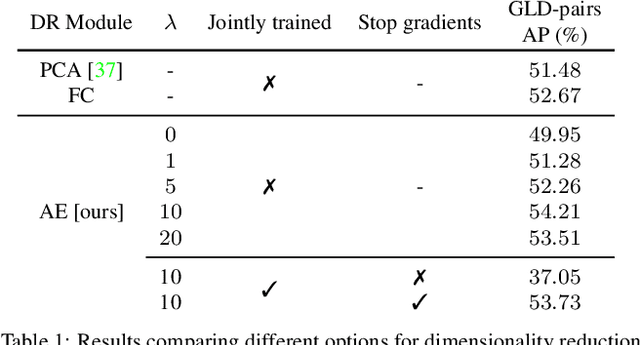
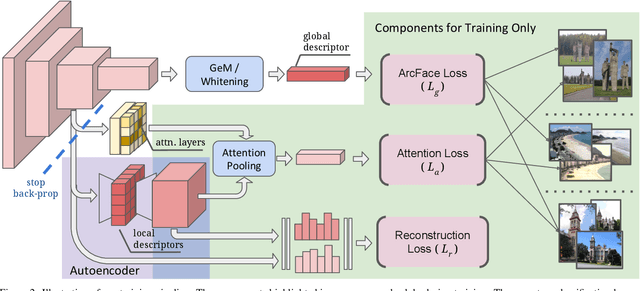

Abstract:A key challenge in large-scale image retrieval problems is the trade-off between scalability and accuracy. Recent research has made great strides to improve scalability with compact global image features, and accuracy with local image features. In this work, our main contribution is to unify global and local image features into a single deep model, enabling scalable retrieval with high accuracy. We refer to the new model as DELG, standing for DEep Local and Global features. We leverage lessons from recent feature learning work and propose a model that combines generalized mean pooling for global features and attentive selection for local features. The entire network can be learned end-to-end by carefully balancing the gradient flow between two heads -- requiring only image-level labels. We also introduce an autoencoder-based dimensionality reduction technique for local features, which is integrated into the model, improving training efficiency and matching performance. Experiments on the Revisited Oxford and Paris datasets demonstrate that our jointly learned ResNet-50 based features outperform all previous results using deep global features (most with heavier backbones) and those that further re-rank with local features. Code and models will be released.
 Add to Chrome
Add to Chrome Add to Firefox
Add to Firefox Add to Edge
Add to Edge